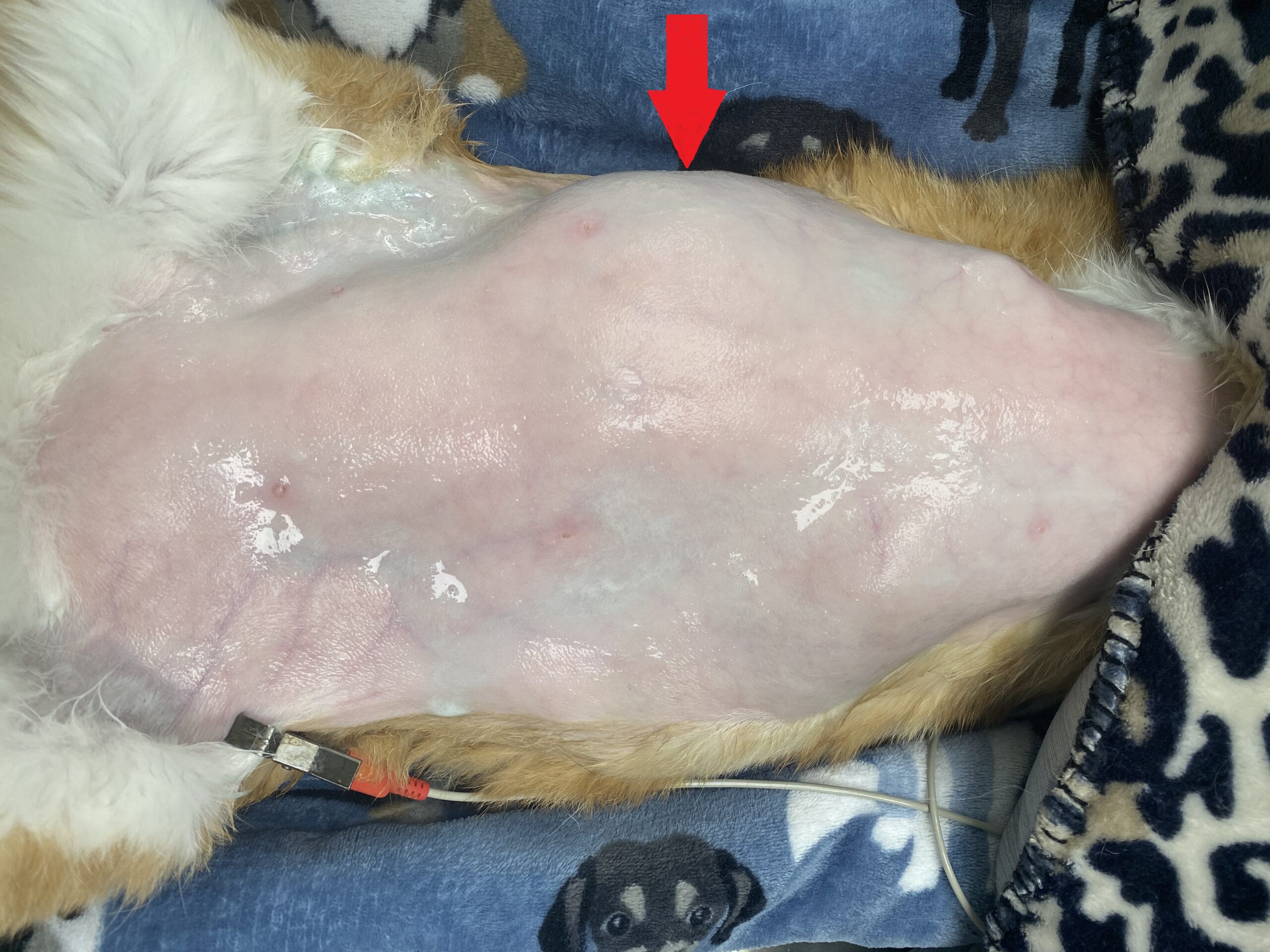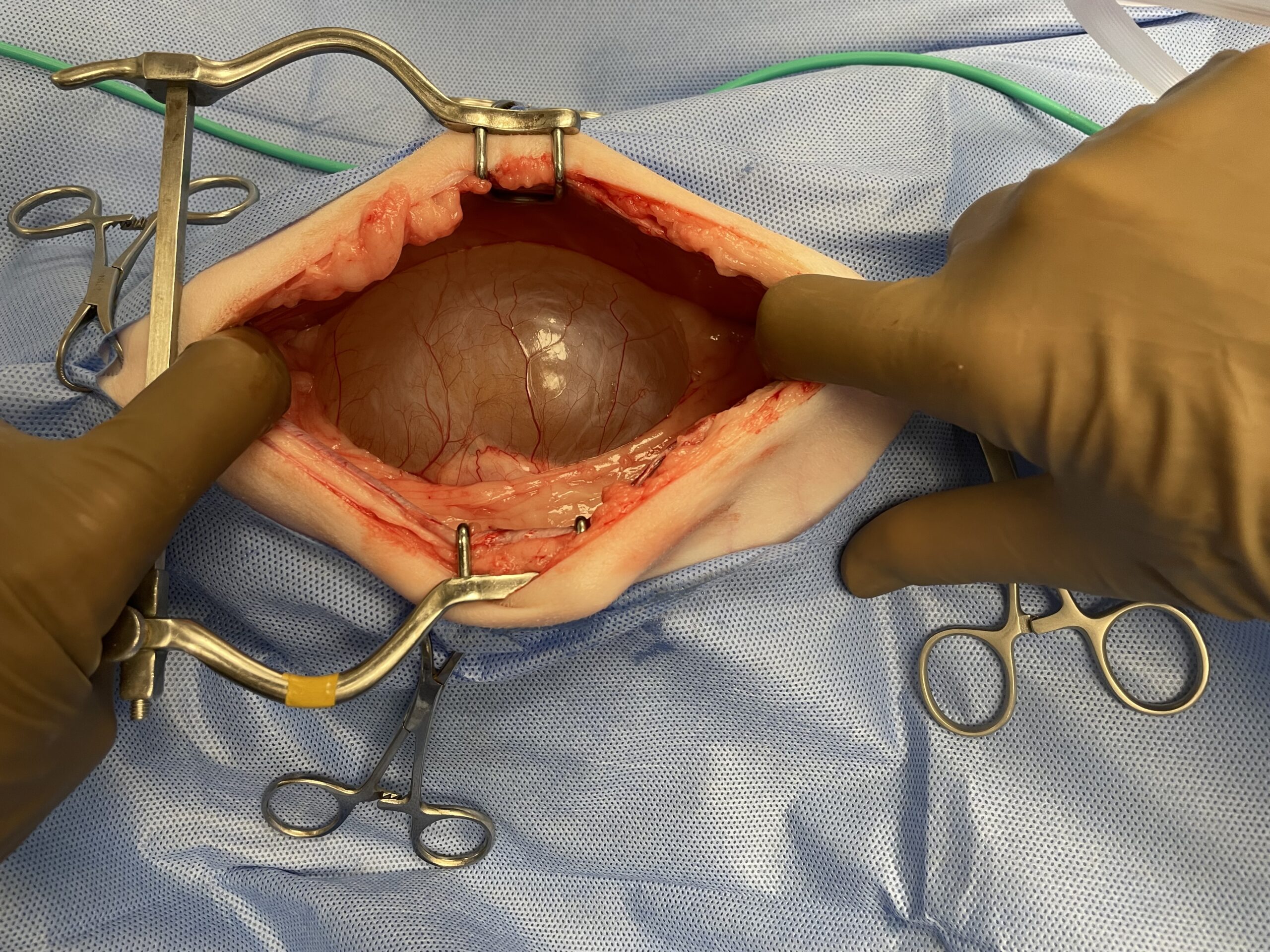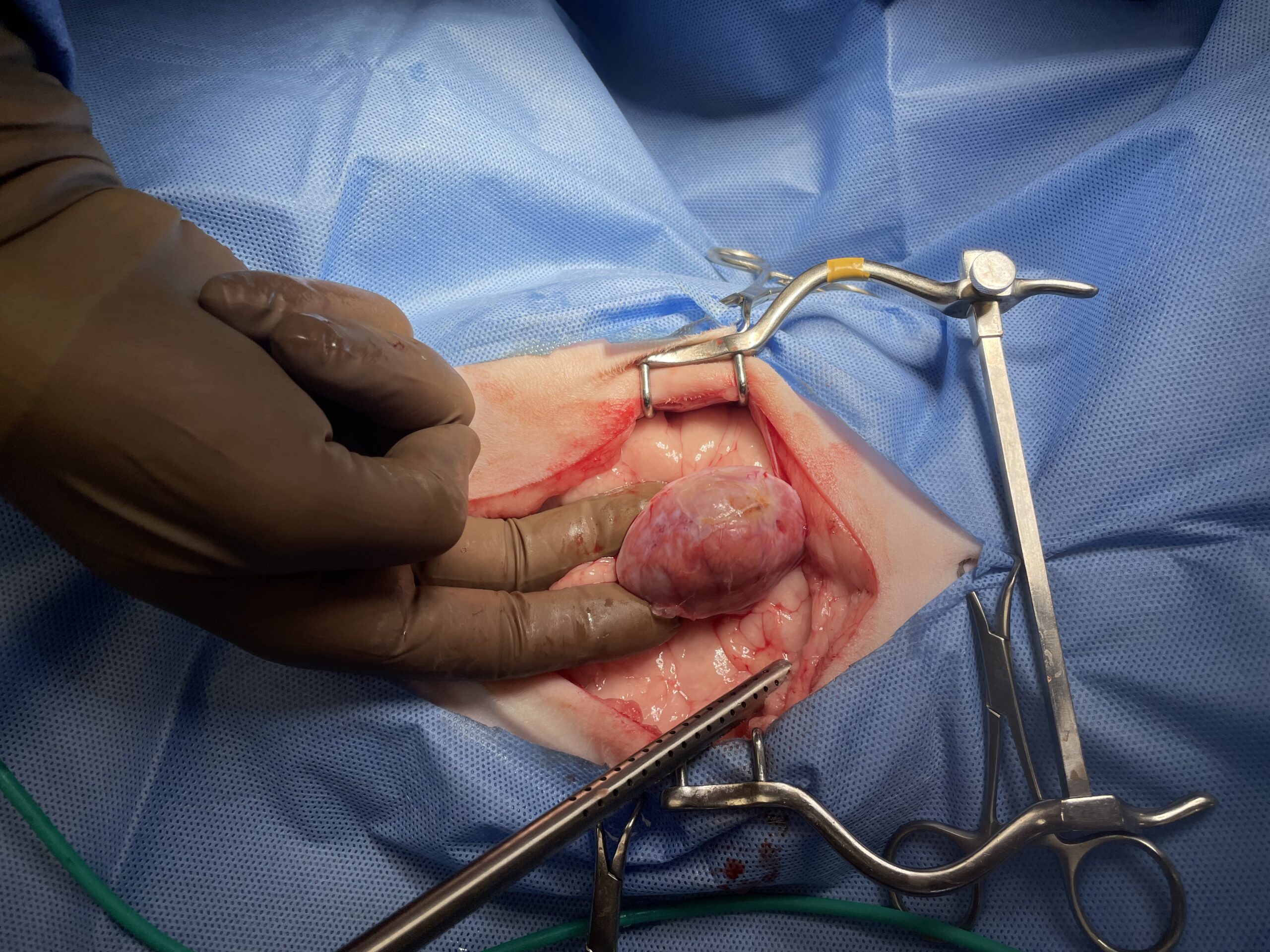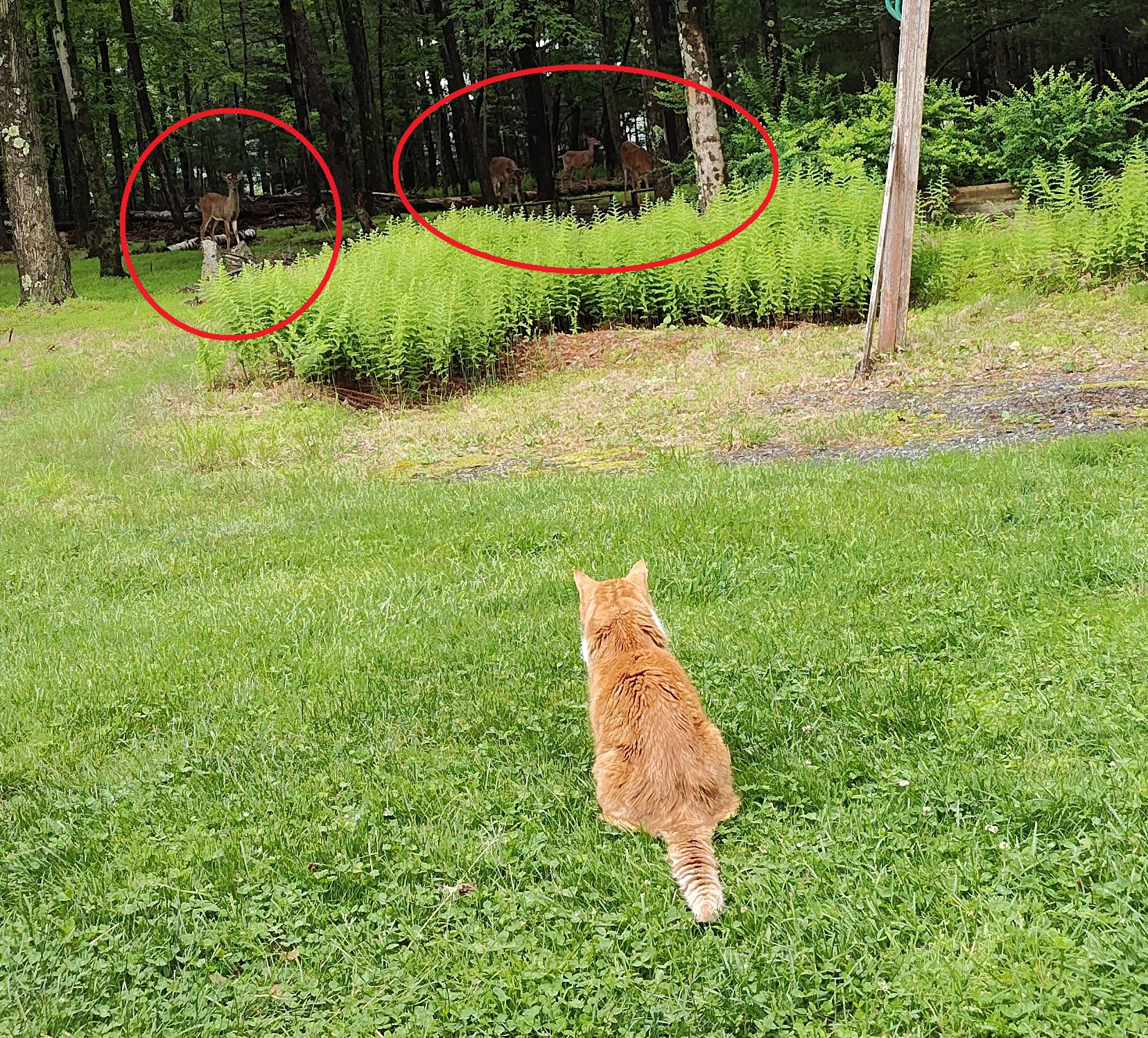
Imagine the surprise of a cat owner who was almost bitten while brushing Taz, a normally sweet 16-year-old kitty!
(Please note that this blog has a link to a video of the surgery – and it’s not for the faint of heart…So watch it at your own risk!)
“He seemed to be having difficulty having bowel movements. Walking around seemed difficult. He kind of slowly meandered. When he started vomiting, I became concerned about an intestinal blockage by a hairball, so I took him to an emergency vet” recalls Taz’s owner.
Long story short, an ultrasound of his belly revealed an enlarged structure involving his right kidney.
The ultrasonographer was not sure whether it was a kidney tumor or a special type of cyst around the kidney.
After review reviewing Taz’s medical record, I was hopeful that it was that special type of cyst.
It is called a peri-nephric pseudo-cyst.
Since nobody wants to say that, it’s often called a renal pseudocyst, or a renal cyst, or a pseudocyst.
We don’t really know how they form, but we suspect that they’re related to advanced kidney disease.
Those cysts do not have a very good reputation because they typically happen in older cats with severe kidney disease (honest translation: they have a terrible reputation, although we’ve seen a number of cats do well).
Yet in Taz’s case, the kidney values were surprisingly normal, which is unusual, but hopefully good for him!
What are the treatment options for a perinephric pseudocyst
The short-term solution is to place a needle in the cyst, under ultrasound guidance, and drain the fluid.
Taz’s owner recalls: “They drained it once, and recommended that I travel 3 hours, either to the University of Penn in Philadelphia, or to a place in Lancaster that gives alcohol injections (sclerotherapy) into cysts, or continue to get it drained periodically.”
I figured I would just get him drained, since they made it sound like it would be an every 3 month affair, but Taz didn’t even make it 1 month before they recommended draining him again. I wasn’t going to turn my best bud into a pin cushion. I was leaning towards the sclerotherapy, but nobody could tell me if the kidney was in jeopardy, since they couldn’t tell if it was a perinephric pseudocyst or not.”
From our standpoint, as surgeons, the best solution is surgery – and we’ve removed a number of these over the years.
Taz’s owner does his homework to find a surgeon
How many pet owners decide to do surgery on their 16 year old cat???
Taz’s owner was fully committed to helping his cat.
“I did my homework on you and LRVSS before I called. Read the blogs. Read your website. Read the Google and Facebook reviews. Investigated the University you went to, etc. Taz has been a very loyal companion for many years. I felt like I owed it to him to give him his best chance at not only living longer, but to live well. I was devastated I might have to put him down or torture him by turning him into a pin cushion, constantly draining him.”
Taz goes to surgery to treat the cyst
After our 16 year old kitty was admitted, although the kidney values were normal (???), we felt prudent to put him on IV fluids to clean up his system and make him a safer anesthesia candidate.
Meanwhile, his owner felt “anxious and distraught. Taz, despite the way he acted, was not a Spring chicken. I was extremely nervous, I felt numb, but I also felt hopeful, since it was his best shot.”
“I thought I was going to lose him, given his age and the studies I read about the procedure. Even though most of those cats seem to have other issues, or worse health problems then Taz, any surgery would make you nervous. But I felt that you guys were his best shot.”
Before surgery, we could see a big bulge on the right side of Taz’s belly (see red arrow).

FAIR WARNING: below are pictures and a video taken during the surgery. There are not for the faint of heart. If you are not a sensitive soul, please continue reading at your own risk 🙂
Tazz was put under anesthesia and moved to the OR.
As soon as his belly was opened, it became evident that he indeed had a pseudocyst – and a huge one!

We created a tiny opening in the cyst and removed a large amount of clear fluid.
Then we removed the lining of the cyst and sent it out for a biopsy to make sure we did not miss something bad. After all, there was a suspicion of cancer.
The right kidney had an abnormal shape, which is typical with this type of cyst.

We explored the rest of the belly to confirm the other organs looked and felt normal, which they did.

Taz’s belly was stitched up and he recovered smoothly in ICU.
What happened after cyst surgery?
Taz’s anesthesia nurse called his owner to reassure him: Taz was awake and safe after surgery!
“I was very emotional and choked up telling my family he made it through surgery.”
After one night on IV fluids, pain medications and antibiotics, Taz went home the next morning.
His astute overnight nurse noticed that his gums were pale, so we recommended doing a red blood cell count.
Shockingly, it went from normal (41%) before surgery to 18%, which is very low.
To this day, we do not have a good explanation for this sudden drop. There certainly was very minimal bleeding during surgery.
Fortunately, he looked alert and had a decent appetite.
The next day, his red blood cell count was 18%.
Not a big increase, but at least a step in the right direction.
Meanwhile, Taz was still alert and had a good appetite, so we were not overly concerned.
From there, Taz felt better and better.
10 days after surgery, his owner writes: “Taz gets stronger by the day. He doesn’t even seem to be in pain at this point. He is eating, drinking, and going to the bathroom well. He hasn’t looked so thin and athletic for a while.”
And 2 weeks after surgery, his red blood cell count was 25%.

Taz’s biopsy comes back
One week after surgery, the biopsy report confirmed that we were, in fact, dealing with a pseudocyst.
No sign of cancer.
This was a great news for Taz.
His owner comments: “Things seemed much better. He moves with ease now. He has a spring in his step. And he is not above trotting. He seems to be discovering the joys of being a cat again slowly, like wondering if he can jump over the gates I used to confine him. Pondering if he can jump up to reach something hanging off the back of a door. Yesterday, I caught him stretching his paw up towards the railing of my enclosed deck to judge whether he could jump up there or not (I caught him so he didn’t get the chance).
Overall, he seems to have more energy and ‘cattitude’.”
How does Taz’s owner feel after surgery?
“It’s hard to put into words. Overall, I feel like you saved my best friend’s life, or at the very least vastly improved it. You guys are great and I’ve been telling people about you every chance I get. I wasn’t sure what to do, and then I found you guys. Suddenly, it was like the clouds parted and I found a way forward. As a result, I am actually doing better myself mentally and physically since it was very stressful to me not being able to make a decision between 2 places that were 3 hours away… and the hardest choice any pet owner could make. I really feel that you guys need to get the word out to the local vets since your services are vital to anyone who has a furry friend with a surgical need.
All I can do is say THANK YOU for allowing me to enjoy more time with my fuzzy buddy.”
And 3 months after surgery, what is Taz up to?
He decided he’s a tiger, and last we heard, he was stalking a herd of whitetail deer…

If you would like to learn how we can help your pet with safe surgery and anesthesia, please contact us through www.LRVSS.com
Never miss a blog by subscribing here: www.LRVSS.com/blog
Phil Zeltzman, DVM, DACVS, CVJ, Fear Free Certified
Pete Baia, DVM, MS, DACVS
www.LRVSS.com

